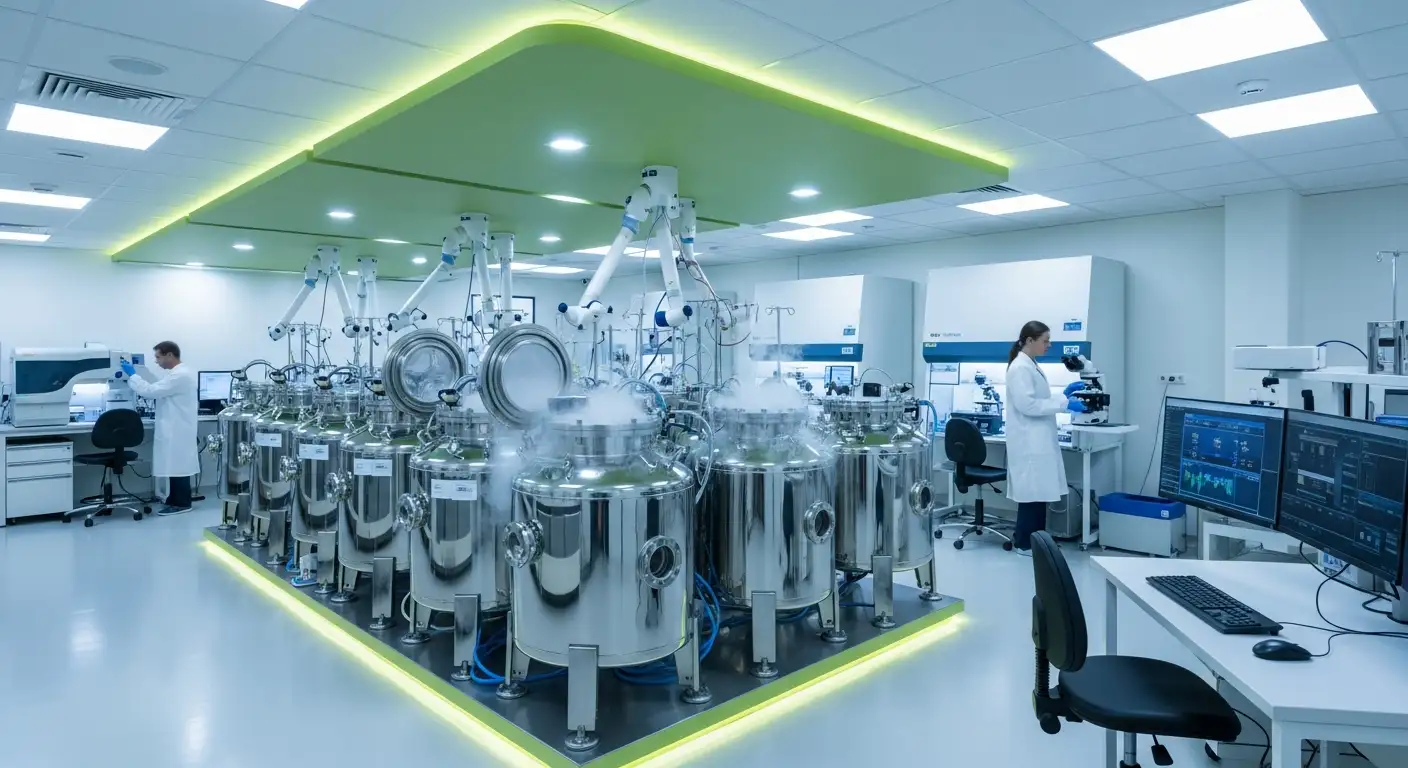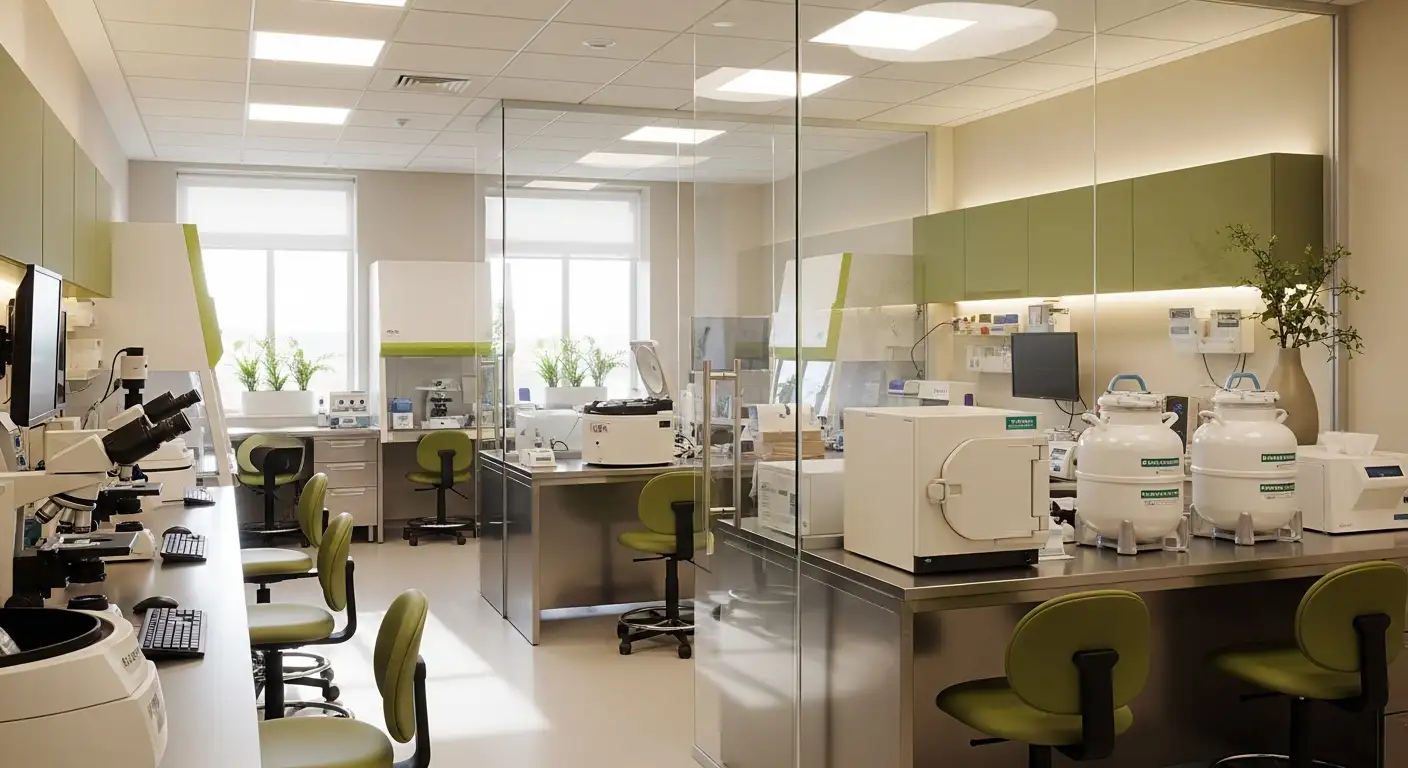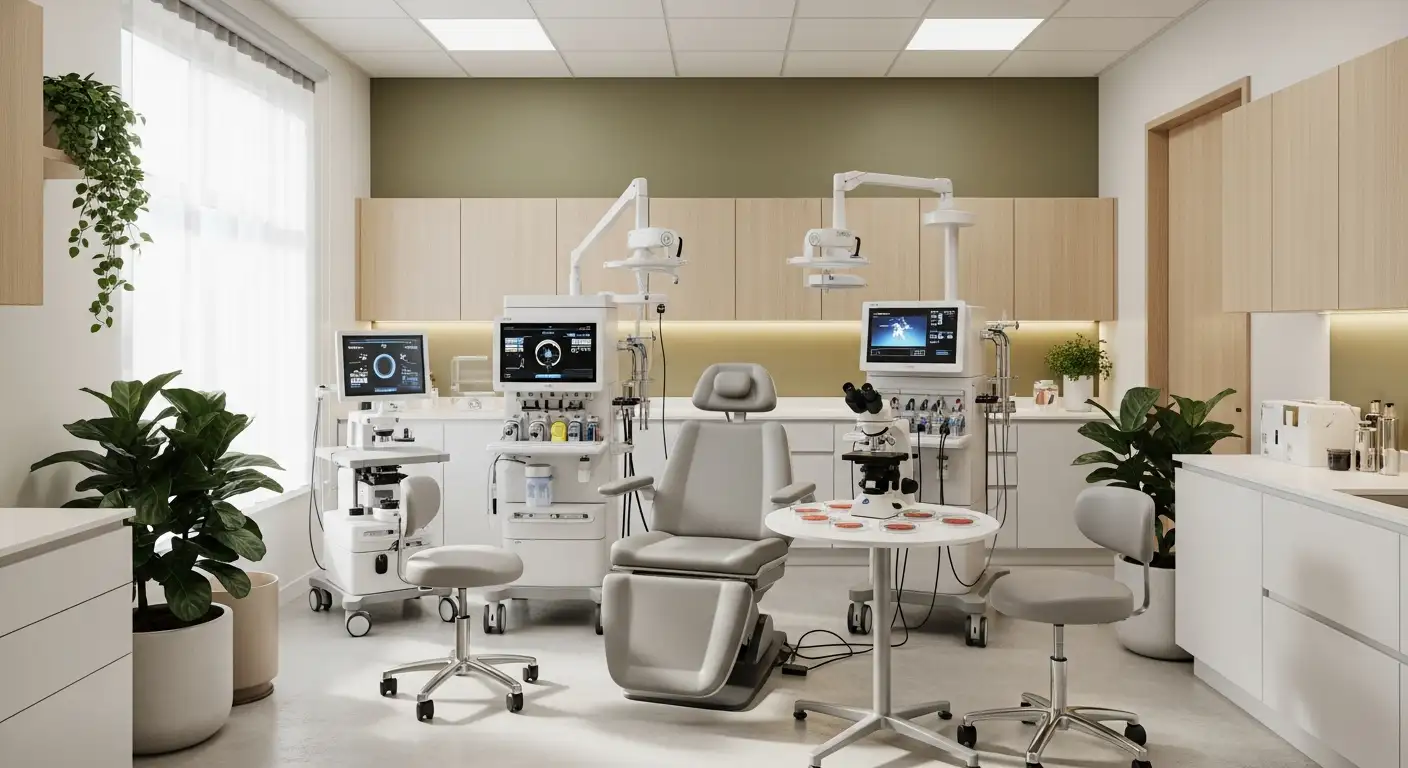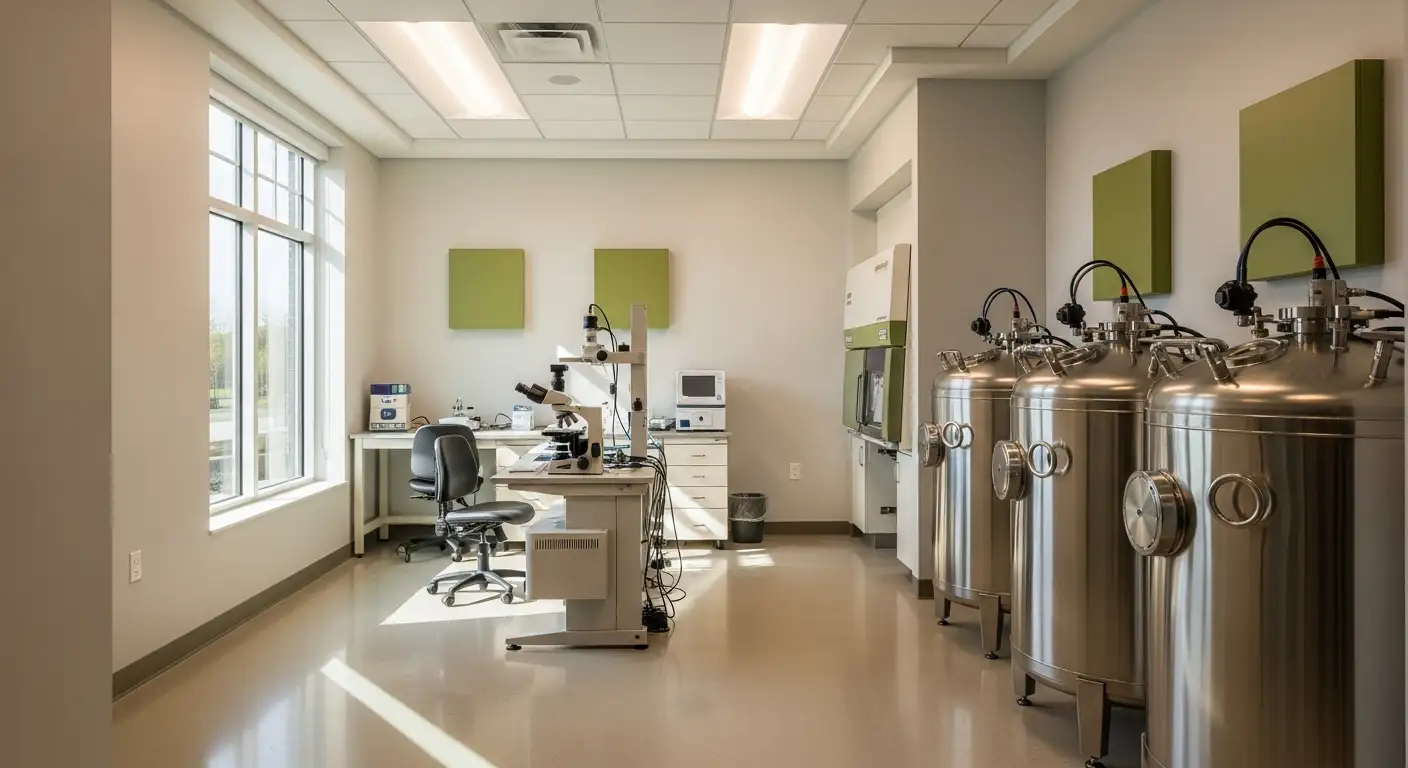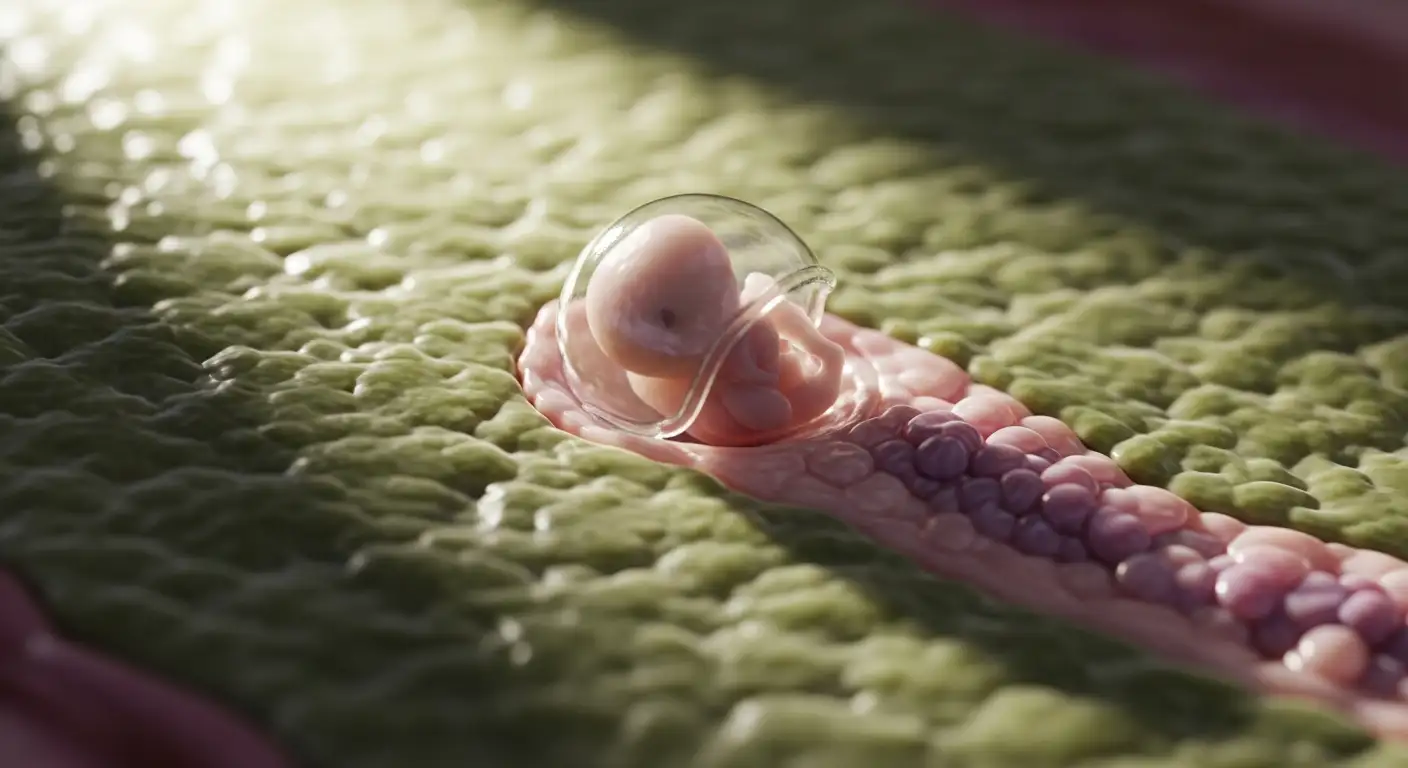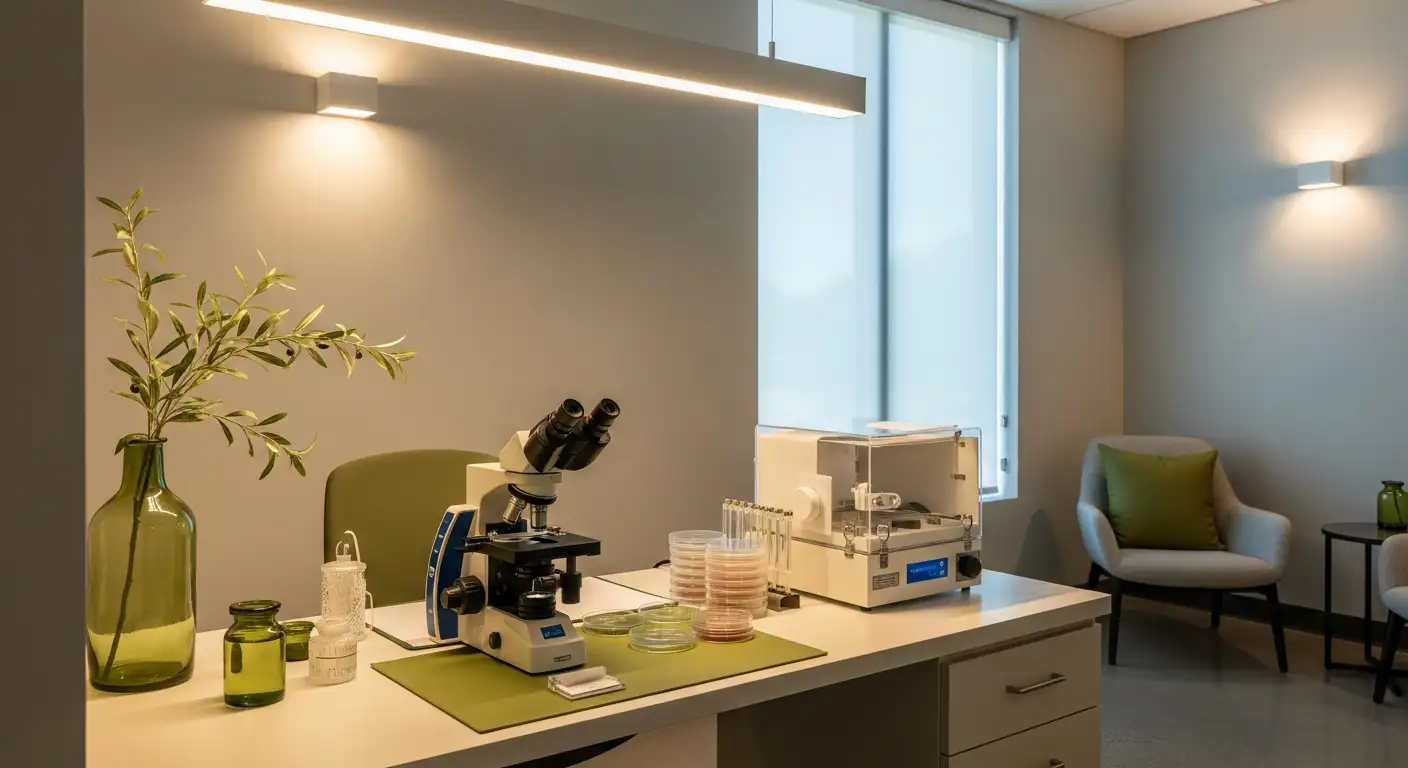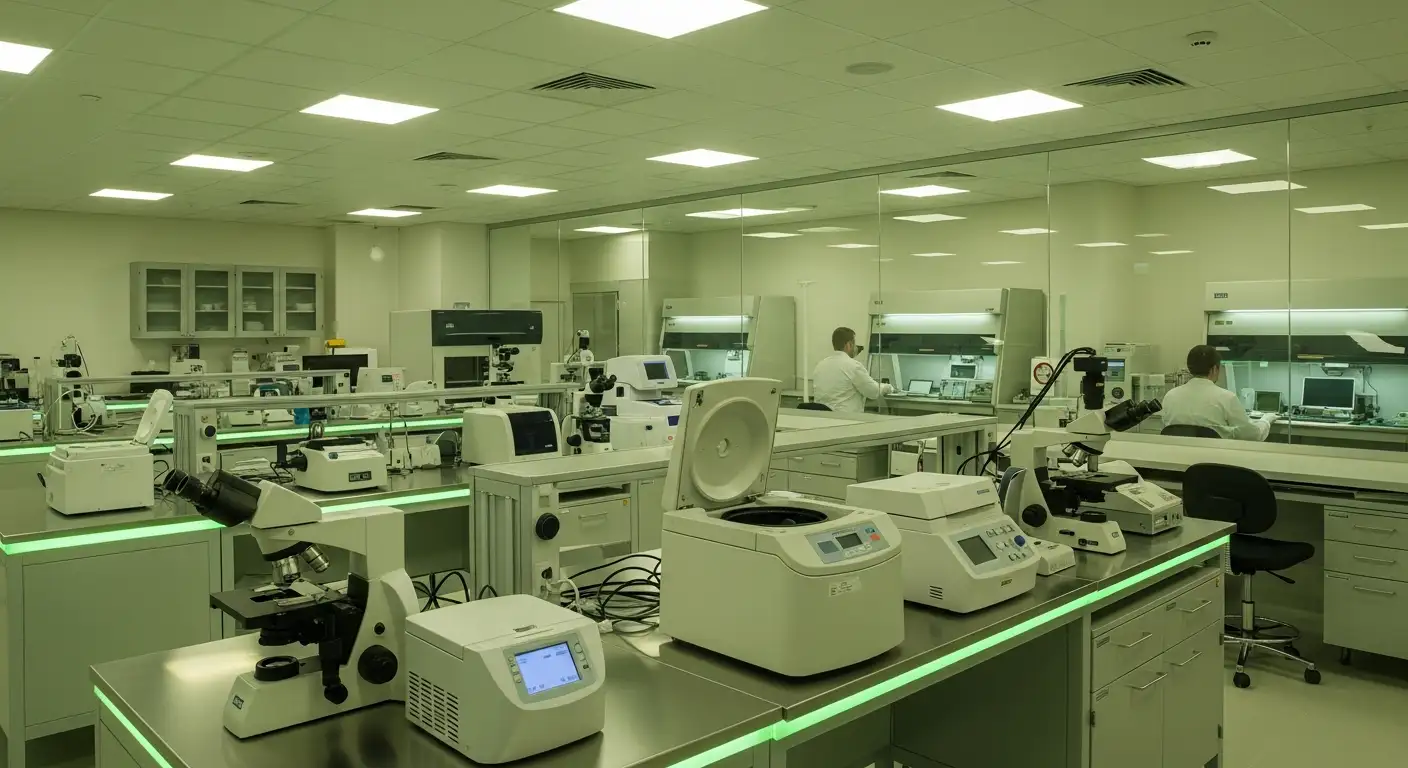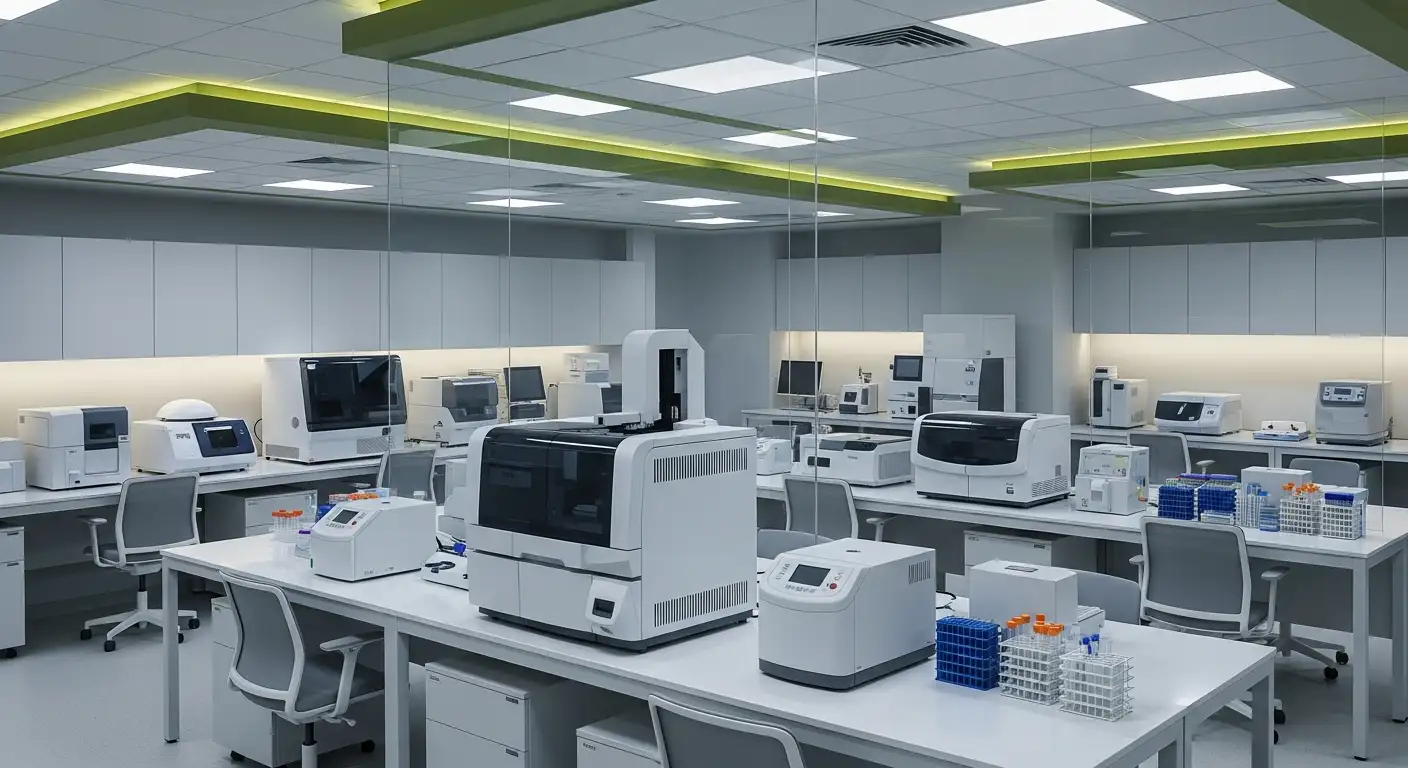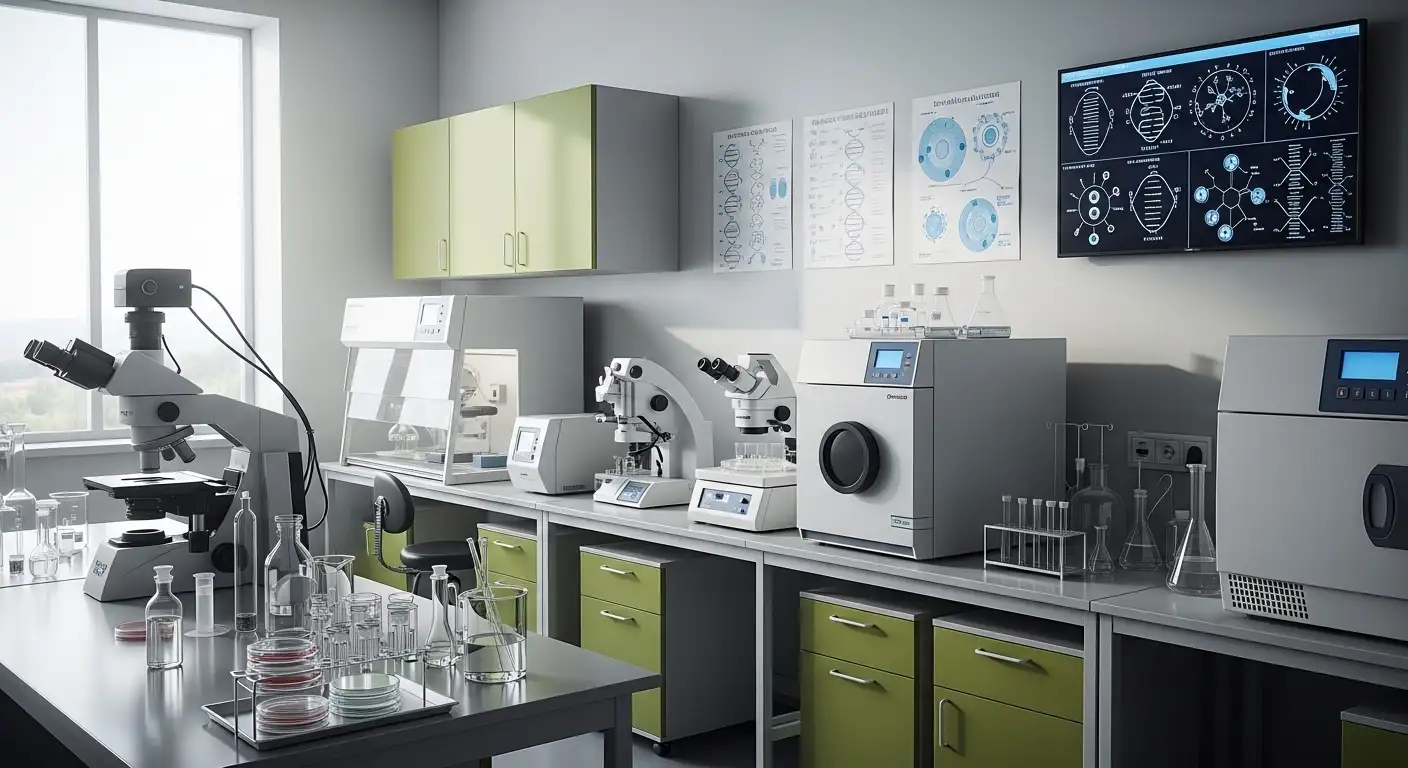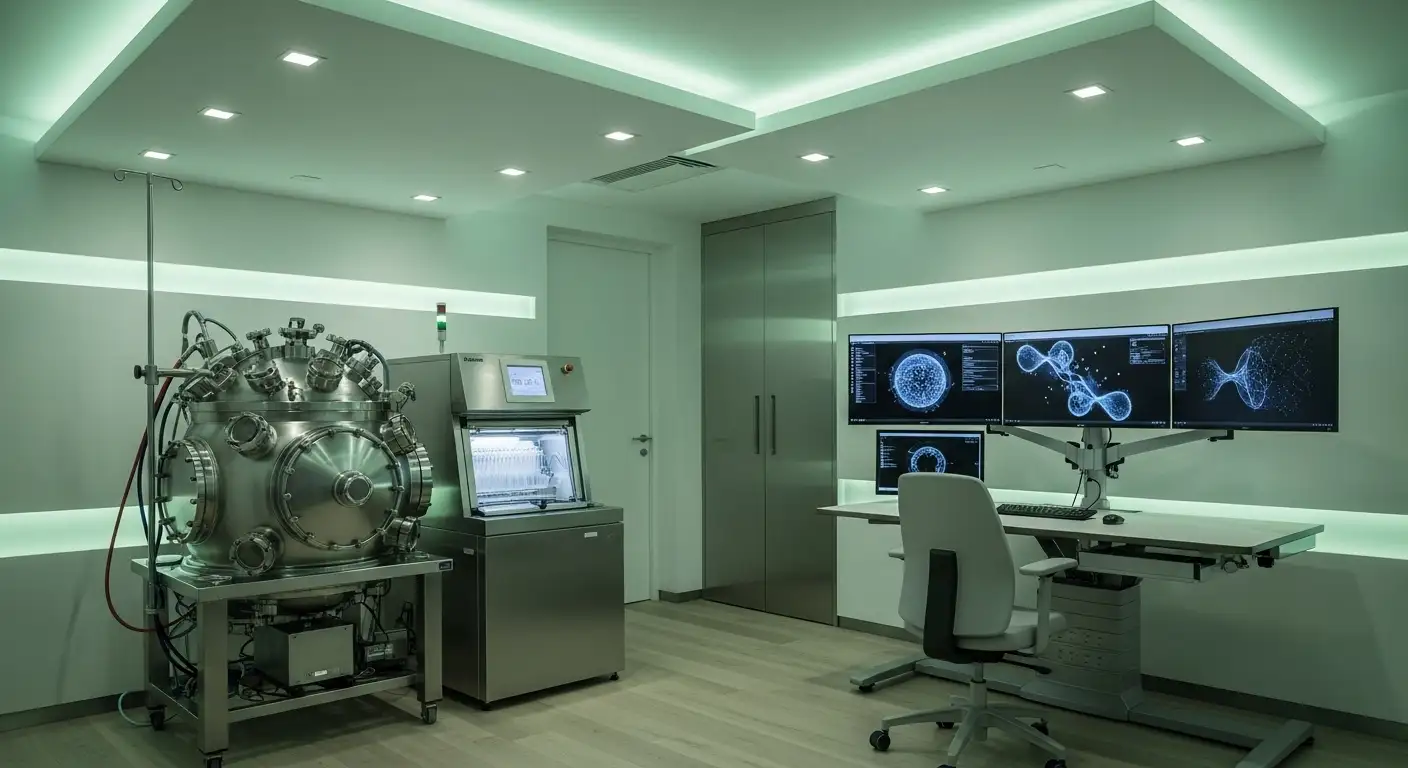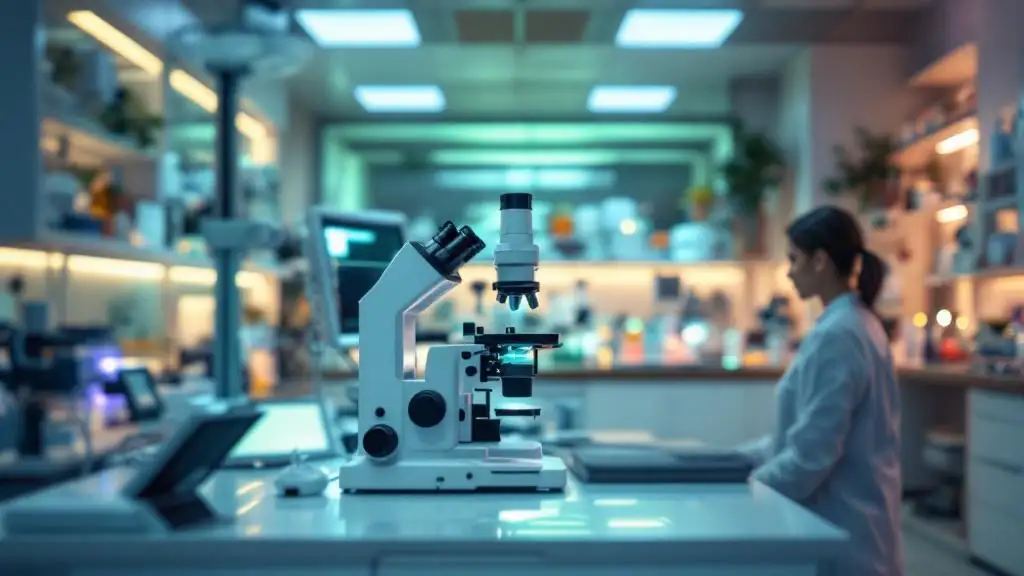Preparing your body for egg retrieval procedures
Essential Steps to Optimize Your Body for Egg Retrieval

Understanding the Importance of Preparation for Egg Retrieval Procedures
Egg retrieval is a pivotal step in assisted reproductive technologies such as in vitro fertilization (IVF), marking a critical phase where mature eggs are collected for fertilization. Proper preparation of the body prior to this procedure not only enhances egg quality and quantity but also helps mitigate potential risks and discomfort associated with the process. This article explores the comprehensive strategies and medical considerations essential for individuals and couples preparing for egg retrieval, offering insights into health optimization, hormonal treatments, procedural details, and emotional support to ensure the best possible outcomes.
Factors Influencing Reproductive Health and Fertility

What factors can impact an individual's or couple's reproductive health and fertility?
Reproductive health and fertility are influenced by a variety of factors spanning biological, medical, lifestyle, and environmental domains. Age is a critical factor, especially for women; fertility sharply declines after age 35 due to diminished egg quality and quantity. Men also experience a decrease in fertility as they age, though generally less pronounced.
Medical conditions such as polycystic ovary syndrome (PCOS), endometriosis, thyroid dysfunction, and hormonal imbalances can impair fertility in women. Structural problems like fallopian tube blockages or uterine anomalies also interfere with conception. For men, issues such as low sperm count or motility can be contributing factors.
Lifestyle choices significantly affect reproductive potential. Smoking and heavy alcohol consumption are detrimental to both egg and sperm health. Obesity and poor nutrition can disrupt hormone balance, while excessive or very intense exercise may hinder fertility. Maintaining a healthy weight and following a nutrient-rich diet, such as the Mediterranean diet, support optimal reproductive function.
Environmental influences include exposure to endocrine-disrupting chemicals, pollutants, and radiation, which can negatively impact both male and female reproductive systems.
Stress management is also important, as chronic stress may affect hormonal regulation and ovulation. Incorporating techniques such as deep breathing or journaling can be beneficial.
Early consultation with healthcare professionals allows for appropriate screening and timely interventions. Adapting lifestyle habits and addressing medical conditions promptly improve the likelihood of successful conception.
| Factor Category | Specific Factors | Impact on Reproductive Health |
|---|---|---|
| Age | Female declining fertility after 35, male aging | Reduced egg quality, sperm quality, and quantity |
| Medical Conditions | PCOS, endometriosis, thyroid disorders, blockages | Hormonal imbalances, physical barriers to fertilization |
| Lifestyle Choices | Smoking, alcohol, obesity, nutrition, exercise | Hormonal disruption, decreased gamete quality |
| Environmental Factors | Chemicals, pollutants, radiation | Toxic effects on reproductive organs and gametes |
| Weight and Diet | Healthy weight, Mediterranean diet | Supports hormone balance and egg/sperm quality |
| Stress Management | Relaxation techniques | Improves hormonal health and ovulatory function |
| Medical Advice | Early fertility testing and treatment | Enables timely intervention and better pregnancy outcomes |
Medical Treatments and Services to Support Conception and Reproductive Health

Fertility evaluation procedures
Fertility assessment is the first step for those seeking to conceive. Common evaluations include blood tests measuring hormone levels and ovarian reserve in women, as well as semen analysis in men. Imaging studies such as ultrasounds assess ovarian and uterine health, while hysterosalpingograms check fallopian tube function.
Hormonal therapies and ovulation induction
Treatments often involve hormonal injections to stimulate egg development and ovulation. Medications like Gonal-f, Follistim, and Menopur encourage multiple follicles to mature simultaneously. Patients receive close monitoring with ultrasounds and blood estradiol measurements to adjust therapy and prevent premature ovulation.
Minimally invasive reproductive surgeries
Some infertility causes require surgeries such as laparoscopic removal of endometriosis or uterine fibroids. These procedures are typically outpatient and help restore or improve reproductive anatomy to facilitate conception.
Assisted reproductive technologies including IVF and IUI
Assisted reproductive technologies (ART) range from intrauterine insemination (IUI), which places prepared sperm directly into the uterus, to in vitro fertilization (IVF). IVF involves ovarian stimulation, egg retrieval under ultrasound guidance, fertilization in the lab either by standard insemination or intracytoplasmic sperm injection (ICSI), embryo culture, and embryo transfer. Cryopreservation options allow freezing of eggs, sperm, or embryos for future use.
Use of donor gametes and surrogacy
When needed, donor eggs, donor sperm, or embryos can be utilized to achieve pregnancy. Gestational surrogacy provides an option for those unable to carry a pregnancy, using IVF techniques combined with the surrogate’s uterus.
Supportive services like genetic and psychological counseling
Genetic counseling helps identify inherited risks that may affect conception or pregnancy outcomes. Psychological counseling supports emotional wellbeing throughout infertility treatment, addressing stress, anxiety, and decision-making. These services enhance overall reproductive health care.
| Service Category | Examples | Purpose |
|---|---|---|
| Fertility Evaluation | Hormone testing, semen analysis | Diagnose fertility status and underlying issues |
| Hormonal Therapies | Ovulation induction medications | Stimulate egg growth and control ovulation timing |
| Minimally Invasive Surgery | Laparoscopy for endometriosis or fibroids | Repair reproductive anatomy |
| Assisted Reproductive Tech | IVF, IUI, ICSI, cryopreservation | Facilitate fertilization and embryo transfer |
| Donor Gametes and Surrogacy | Donor eggs/sperm, gestational surrogacy | Provide additional reproductive options |
| Supportive Counseling | Genetic, psychological counseling | Improve emotional and genetic health management |
How IVF and IUI Enhance Fertility Outcomes

How do fertility treatments like IVF and IUI work to enhance chances of conception?
Fertility treatments such as In Vitro Fertilization (IVF) and Intrauterine Insemination (IUI) enhance conception chances through distinct but complementary methods.
Mechanisms of IVF
IVF involves stimulating the ovaries to produce multiple eggs using hormonal injections. These eggs are then surgically retrieved under ultrasound guidance after precise timing of a trigger shot, typically 36 hours before the procedure. Retrieved eggs undergo fertilization in the laboratory either by standard insemination—where sperm and eggs are mixed—or by Intracytoplasmic Sperm Injection (ICSI), where a single sperm is directly injected into an egg.
Process of Ovarian Stimulation and Egg Retrieval
Ovarian stimulation usually lasts 8 to 12 days, monitored closely with ultrasounds and blood tests to assess follicle growth and hormone levels. The egg retrieval procedure is a short outpatient process performed under sedation, usually lasting 10–30 minutes. Post-procedure, patients manage mild symptoms like cramping or bloating while avoiding heavy exercise.
Fertilization Techniques Including ICSI
After retrieval, fertilization occurs with either conventional insemination or ICSI. ICSI is especially helpful for cases of male infertility, allowing fertilization even when sperm count or motility is low. Fertilized eggs develop into embryos ready for transfer back to the uterus or freezing for future use.
Overview of IUI Procedure
IUI is a less invasive fertility treatment where specially prepared sperm is placed directly into the uterus around ovulation, increasing the chances that sperm will meet the egg. It often pairs with ovulation-inducing medications but does not involve egg retrieval or fertilization outside the body.
Indications for Both IVF and IUI
IVF is typically indicated for more complex issues such as blocked fallopian tubes, severe male factor infertility, endometriosis, or unexplained infertility. IUI is often recommended for mild male factor infertility, cervical factor issues, or unexplained infertility.
Comparison of Success Rates and Appropriateness
IVF generally offers higher success rates because it bypasses multiple barriers to fertilization and implantation. IUI is less invasive and less costly but has lower per-cycle success, making it appropriate for less severe infertility cases or as an initial treatment before IVF.
| Treatment | Key Steps | Suitable For | Typical Success Rate | Procedure Invasiveness |
|---|---|---|---|---|
| IVF | Ovarian stimulation, egg retrieval, fertilization (including ICSI), embryo transfer | Blocked tubes, severe male infertility, unexplained infertility | Higher success per cycle | Surgical retrieval under sedation |
| IUI | Sperm preparation and intrauterine placement around ovulation | Mild male factor, cervical issues, mild ovulatory issues | Lower success per cycle | Non-surgical, outpatient |
Both IVF and IUI enhance fertility by overcoming specific reproductive challenges, offering tailored approaches depending on the underlying cause of infertility.
Optimizing Health Before Egg Retrieval: Lifestyle and Nutritional Strategies

Avoidance of Alcohol, Smoking, and Endocrine Disruptors
To support egg quality and increase the chances of IVF success, it's crucial to avoid alcohol and quit smoking. Both habits negatively affect fertility by harming egg cells and hormonal balance. Additionally, steering clear of endocrine disruptors—chemicals found in some plastics and personal care products—helps maintain optimal reproductive health.
Healthy Eating Habits and Nutrient-Rich Diets
A nutrient-rich diet, such as the Mediterranean diet, enhances fertility by providing essential vitamins and antioxidants that protect and nurture eggs. Emphasizing whole grains, fresh fruits and vegetables, lean proteins, and healthy fats supports the body’s reproductive functions.
Role of Prenatal Supplements and Fertility-Specific Nutrients
Taking prenatal vitamins prepares the body for pregnancy and may improve egg quality. Fertility-specific supplements like Impryl provide additional support for egg health and overall reproductive well-being, delivering targeted nutrients that nourish ovarian function.
Benefits of Moderate Exercise and Physical Activity
Engaging in moderate, consistent exercise boosts circulation and reduces stress, both beneficial for reproductive health. However, high-impact or intense workouts should be avoided during hormone stimulation and after egg retrieval to prevent undue ovarian strain.
Importance of Adequate Vitamin D Levels
Vitamin D plays a vital role in reproductive function. Obtaining sufficient levels through sun exposure, diet, or supplements can enhance egg quality and hormone regulation.
Stress Reduction Techniques Including Mindfulness and Journaling
Managing pre-procedure anxiety through deep breathing, mindfulness, and journaling improves emotional well-being. Reducing stress helps create a hormonal environment favorable for egg maturation and retrieval.
These lifestyle choices collectively prepare the body for the demands of egg retrieval, promoting healthier eggs and a smoother IVF process.
Pre-Cycle Assessment and Medical Screening
What Are Baseline Ultrasounds and Blood Tests?
Baseline ultrasounds and blood tests are essential initial steps in the IVF process. Conducted a few days after menstrual bleeding begins, these tests evaluate ovarian and uterine health, helping physicians determine the appropriate stimulation protocol. The ultrasound checks follicle count and uterine lining thickness, while blood tests measure hormone levels such as follicle-stimulating hormone (FSH) and estradiol.
How Is Ovarian Reserve Tested?
Ovarian reserve testing assesses a woman's quantity and quality of eggs, which is vital for predicting the response to ovarian stimulation. Common tests include measuring anti-Müllerian hormone (AMH) levels and antral follicle count (AFC) via ultrasound. These indicators help tailor the IVF protocol to optimize egg retrieval outcomes.
What About Semen Analysis and Male Fertility Evaluation?
Evaluating male fertility is equally critical before IVF. Semen analysis measures sperm count, motility, and morphology, identifying any issues that could hinder fertilization. This evaluation guides decisions regarding fertilization methods, such as using intracytoplasmic sperm injection (ICSI) if sperm quality is low.
Why Screen for Infectious Diseases and Uterine Health?
Screening for infectious diseases protects both the patient and the embryo development process, ensuring safety during treatment. Additionally, uterine exams assess for structural abnormalities or conditions such as fibroids or polyps that might affect implantation and pregnancy success.
What Is Included in Individualized Medication Calendars?
After assessments, patients receive a medication calendar outlining specific hormone injections, timing for the trigger shot, and other treatments. This individualized plan ensures precise ovarian stimulation and ovulation control, optimizing egg quality and quantity.
How Do IVF Instructional Classes and Counseling Help?
IVF classes offer comprehensive education about the process, medications, and expectations, helping reduce anxiety and improve adherence. Counseling supports emotional wellbeing, managing stress related to fertility treatments and enhancing overall patient readiness.
| Assessment Component | Purpose | Details |
|---|---|---|
| Baseline Ultrasounds & Blood Tests | Evaluate reproductive organs and hormones | Conducted early in cycle to guide stimulation dosage |
| Ovarian Reserve Testing | Measure egg quantity and predict response | Includes AMH levels and antral follicle count |
| Semen Analysis | Assess male fertility status | Evaluates sperm count, motility, and morphology |
| Infectious Diseases & Uterine Screening | Ensure safety and assess uterine conditions | Prevents transmission, checks for uterine abnormalities |
| Medication Calendars | Individualized treatment planning | Details hormone injections & trigger timing |
| IVF Classes & Counseling | Educate and support patients | Prepares patient emotionally and physically |
Hormonal Stimulation Protocols and Monitoring for Egg Retrieval
Medications Used for Ovarian Stimulation
In preparation for egg retrieval during IVF, hormonal injections are administered to stimulate the ovaries to produce multiple mature eggs. Common medications include Gonal-f, Follistim, and Menopur, which contain synthetic follicle-stimulating hormone (FSH) and luteinizing hormone (LH) or gonadotropins. These medications encourage the growth and development of multiple ovarian follicles to maximize the number of retrievable eggs.
Monitoring Follicle Growth and Estradiol Levels
Throughout the stimulation phase, follicle growth is closely monitored using transvaginal ultrasound scans. Follicles are typically measured to ensure they reach about 18 mm in diameter, indicating readiness for retrieval. Additionally, blood tests are performed to assess estradiol levels, a hormone produced by the growing follicles, helping to evaluate their maturity and adjust treatment accordingly.
Preventing Premature Ovulation
To prevent premature ovulation, which can reduce the number of eggs retrieved, medications such as GnRH (gonadotropin-releasing hormone) agonists or antagonists are used. These agents suppress the body's natural hormone surge that triggers ovulation, allowing precise scheduling of the egg retrieval procedure.
Adjusting Medication Dosages
Medication doses may be modified during the stimulation period based on ultrasound findings and hormone levels. If follicles are developing too quickly or too slowly, or if estradiol levels are outside the expected range, physicians tailor the hormone injections to optimize follicle growth and egg quality.
Priming with Estrogen or Oral Contraceptives
Some patients undergo priming with estrogen or oral contraceptive pills for 1-3 weeks before stimulation. This strategy helps regulate the menstrual cycle and improve the uniformity and maturity of follicles before starting ovarian stimulation, potentially enhancing the chances of successful egg retrieval.
The Critical Role of the HCG Trigger Shot and Timing of Egg Retrieval
Purpose and Timing of the HCG Trigger Shot
The HCG trigger shot plays a pivotal role in the IVF process by initiating the final maturation of eggs within the ovarian follicles. Administered as a hormonal injection, HCG mimics the natural luteinizing hormone surge that induces ovulation. This trigger ensures that the eggs reach the stage of maturity necessary for successful fertilization.
Optimal Follicle Size for Retrieval
Monitoring of follicle growth is conducted via ultrasound, with the aim to retrieve eggs when follicles reach an optimal diameter of about 18 millimeters. This size indicates that the follicles—and consequently the eggs inside—have matured enough to maximize the chances of producing viable embryos.
Coordination of Retrieval Approximately 36 Hours Post-Trigger
Timing is crucial; egg retrieval is typically scheduled around 36 hours after the trigger shot is given. This precise timing allows the eggs to complete their maturation process without ovulating prematurely. Retrieving eggs too early or too late can affect egg quality and fertilization success.
Ensuring Egg Maturity and Readiness for Fertilization
By synchronizing the trigger shot with follicle size and scheduling retrieval accordingly, clinicians optimize the maturity of eggs collected. Mature eggs are more likely to fertilize successfully either via standard insemination or intracytoplasmic sperm injection (ICSI), increasing the overall effectiveness of the IVF treatment.
The Egg Retrieval Procedure: What to Expect
Outpatient Procedure Overview
Egg retrieval is a crucial, yet relatively quick outpatient process performed during IVF treatment to collect eggs from the ovaries. It typically involves minimal discomfort and does not require an overnight hospital stay, allowing patients to return home the same day.
Use of Sedation or Anesthesia
To ensure comfort, the procedure is performed under light sedation or general anesthesia. This helps patients relax and prevents pain while the eggs are being aspirated from the follicles.
Ultrasound Guidance During Egg Aspiration
A key component of the procedure is the use of ultrasound imaging. The ultrasound guides a thin needle through the vaginal wall directly into the ovarian follicles to precisely collect mature eggs. This real-time visualization increases safety and accuracy.
Duration of the Procedure (10-30 Minutes)
The entire process usually lasts between 10 to 30 minutes. Despite its short duration, multiple eggs can be retrieved during this time frame, depending on follicle development and response to ovarian stimulation.
Safety and Minimal Discomfort Experienced by Patients
Most patients report mild sensations similar to menstrual cramping during and after the procedure. Common side effects include slight bloating, soreness, or cramping that typically resolve quickly. Serious complications are rare, and careful monitoring ensures patient safety throughout.
Post-Retrieval Recovery and Care Instructions
Short Post-Procedure Monitoring
After egg retrieval, patients typically spend a brief period in a recovery room to be monitored. This is to ensure that the sedation effects wear off safely and any immediate discomfort is managed. The entire procedure and recovery phase usually allow patients to return home the same day.
Managing Mild Side Effects
It is common to experience mild cramping, bloating, and abdominal tenderness following egg retrieval. Spotting may also occur. These symptoms are generally manageable with over-the-counter pain relief. Patients should carefully follow their physician's advice regarding medication and when to seek medical attention.
Activity Restrictions
Patients are advised to rest on the day of the procedure and engage only in light activities afterward. Vigorous exercise should be avoided for about two weeks to protect ovarian health and prevent complications. Additionally, sexual intercourse is generally restricted during this recovery period.
Emotional Support and Anxiety Management
Since egg retrieval is a significant emotional milestone, managing stress is important. Techniques such as deep breathing exercises, journaling, or seeking support from friends, family, or counselors can help ease anxiety and promote emotional well-being during recovery.
Recognizing Signs of Complications
Although rare, ovarian hyperstimulation syndrome (OHSS) is a potential complication. Warning signs include severe pelvic pain, rapid weight gain, significant abdominal swelling, difficulty breathing, or decreased urination. If any of these symptoms appear, patients should contact their healthcare provider immediately to receive prompt care.
Laboratory Processing of Eggs and Fertilization Options
Handling of Retrieved Eggs in Embryology Labs
After egg retrieval, the collected eggs are carefully taken to the embryology laboratory where they are prepared for fertilization. The eggs are assessed for maturity and quality before fertilization attempts begin. Lab technicians use precise techniques to handle and culture the eggs to ensure optimal conditions for fertilization and development.
Standard Insemination Versus Intracytoplasmic Sperm Injection (ICSI)
There are two primary methods for fertilizing eggs in the lab. Standard insemination involves placing eggs and sperm together in a petri dish and allowing fertilization to occur naturally. In contrast, Intracytoplasmic Sperm Injection (ICSI) involves the direct injection of a single sperm into an egg, which is particularly useful for cases with male factor infertility or previous fertilization difficulties.
Embryo Culture and Development Stages
Once fertilization occurs, embryos are cultured for 2 to 5 days in specialized incubators. During this time, they develop through stages such as the 2-cell, 4-cell, and eventually the blastocyst stage around day 5. Embryo quality is closely monitored to determine the best timing for transfer or freezing.
Freezing (Cryopreservation) of Eggs and Embryos for Future Use
Eggs and embryos that are not immediately used may be cryopreserved using vitrification, a rapid freezing process that preserves their viability long-term. Frozen eggs or embryos can be stored for extended periods and later thawed for use in assisted reproduction, offering patients flexibility in family planning.
Factors Influencing Fertilization Success
Several aspects influence fertilization success, including egg quality, sperm health, and laboratory techniques. The use of ICSI can improve outcomes when sperm quality is compromised. Additionally, optimal culture conditions and timely egg retrieval after the trigger shot enhance fertilization rates and embryo development.
| Aspect | Description | Impact on IVF Outcome |
|---|---|---|
| Egg handling | Careful assessment and preparation in lab | Ensures egg viability and readiness for fertilization |
| Fertilization method | Standard insemination or ICSI | Choice depends on sperm and egg factors, affecting fertilization success |
| Embryo culture | Monitoring stages up to blastocyst | Helps select best embryos for transfer or freezing |
| Cryopreservation technique | Vitrification for eggs and embryos | Maintains long-term viability, allowing future use |
| Factors affecting success | Egg/sperm quality, timing, lab environment | Determines fertilization rates and embryo quality |
Emotional and Psychological Support During the Egg Retrieval Journey
Why is counseling and emotional support important in fertility care?
Counseling and support services are essential components of fertility and reproductive health care. They help individuals and couples navigate the emotional complexities of fertility treatments like egg retrieval and IVF. These services provide a space to express fears, manage stress, and receive guidance on treatment decisions, which can often be overwhelming.
How can anxiety be managed around the egg retrieval procedure?
Managing anxiety before and during egg retrieval is crucial. Emotional support helps patients understand what to expect and reassures them about the safety and routine nature of the procedure. Techniques such as deep breathing exercises and journaling are useful tools to reduce pre-procedure tension and promote calmness.
What role does psychological counseling play in fertility treatments?
Psychological counseling addresses the emotional challenges that fertility treatments bring, including feelings of grief, guilt, or uncertainty. It supports mental health resilience, aids in coping with treatment outcomes, and encourages healthy communication among partners. This counseling often improves overall treatment experiences and outcomes.
How valuable are support networks including partners, family, and professionals?
Support systems involving partners, family members, and fertility specialists provide a network of understanding and encouragement. Emotional support from loved ones combined with professional care fosters a nurturing environment, helping patients feel less isolated during their fertility journey. Together, these networks empower patients to cope effectively and maintain emotional well-being.
Preparing Your Body: A Vital Step Toward Successful Egg Retrieval and IVF
Preparing your body for egg retrieval is a multifaceted process that integrates lifestyle optimization, precise medical protocols, and emotional well-being, all geared toward maximizing reproductive success. By understanding the factors that impact fertility, proactively engaging with medical screening and hormonal treatments, and embracing supportive care measures, individuals and couples can navigate the egg retrieval procedure with greater confidence and comfort. Thoughtful preparation empowers patients not only physically but also emotionally, facilitating the complex journey of assisted reproduction and enhancing the likelihood of fulfilling their parenthood dreams.
References
- Egg Retrieval Process: What To Expect Before, During, & ...
- Tips to Prepare for Your Egg Retrieval Procedure | Blog
- In vitro fertilization (IVF)
- How to Prepare Your Body for Egg Freezing
- IVF Process Day by Day - In Vitro Fertilization Steps
- Freezing Eggs: Preserving Fertility for the Future
- IVF Step By Step
- The Role of the Fertility Counselors | RESOLVE
- Role of Fertility Counseling in Your Reproductive Journey
- Counseling Clients Through IVF





